Lecturers of Workshop on Plastic Chemical Sensors
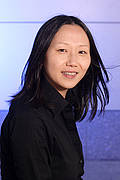
Zhenan Bao is an Associate Professor of Chemical Engineering in Stanford. Her research involves design and synthesis of new organic materials and processing methods for flexible electronics. She is a recipient of the American Chemical Society Team Innovation Award 2001, R&D 100 Award, R&D Magazine’s Editors Choice of the “Best of the Best” new technology for 2001, and Nano 50™ Awards in the Innovator category by Nanotech Briefs® in 2007. She has been selected in 2002 by the American Chemical Society Women Chemists Committee as She one of the twelve “Outstanding Young Woman Scientist who is expected to make a substantial impact in chemistry during this century”. She was among the top 100 young innovators for this century selected by MIT Technology Review. She received the Nano 50 Innovator award in 2007 and has been elected a SPIE Fellow in 2008. She has been appointed as the Robert Noyce Faculty Scholar and Finmeccanica Faculty Scholar.
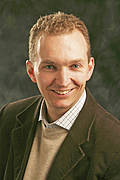
Magnus Berggren received his MSc in Physics from Linköping University (LiU) in 1991 and completed his PhD at the Laboratory of Applied Physics, also at LiU, in 1996. Today he is the professor in Organic Electronics at LiU and since 2005 he has been the director of the Strategic Research Centre for Organic Bioelectronics. His research interests cover utilising organic electronics in novel applications such as in printed paper electronics and in biology applications.

Raghu Das MA (Cantab) is CEO/MD of IDTechEx. He has a BA Natural Sciences degree from Cambridge University, where he studied physics. He has been closely involved with the development of RFID and printed electronics for over 6 years, carrying out consultancy in Europe, USA, Asia and the Middle East. He has lectured on RFID, smart packaging and printed/organic electronics at over 200 events and conferences around the world and is author of several IDTechEx publications.
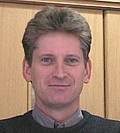
Dermot Diamond received his Ph.D. and D.Sc. from Queen’s University Belfast (Chemical Sensors, 1987, Internet Scale Sensing, 2002), and was Vice president for Research at Dublin City University (DCU), Ireland (2002-2004). Prof. Diamond is currently director of the National Centre for Sensor Research at DCU (www.ncsr.ie) and a Principal Investigator with the Adaptive Information Cluster (AIC), a major research initiative in the area of wireless sensor networks founded by Science Foundation Ireland (see www.adaptiveinformation.ie). He was also formerly the director of the Centre for Bioanalytical Sciences (www.cbas.ie). He is a member of the editorial advisory boards of the international journals ‘The Analyst’ and ‘Talanta’. In 2002 he was awarded the inaugural silver medal for Sensor Research by the Royal Society of Chemistry, London. Details of his research can be found at http://www.dcu.ie/chemistry/asg/.
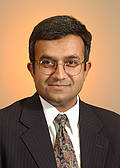
Ananth Dodabalapur received his bachelors degree from the Indian Institute of Technology, Madras (Chennai) in 1985, and M.S. and Ph.D. degrees in Electrical Engineering from The University of Texas at Austin in 1987 and 1990 respectively. Between 1990 and 2001 he was with Bell Laboratories, NJ. Since 1992 he has investigated various aspects of the physics and technology of organic and polymer semiconductor devices. He is a co-recipient of the 2002 National award for team innovation of the American Chemical Society, and a co-recipient of an R&D 100 award for 2001. Since September 2001, he is with The University of Texas at Austin and is the Ashley H Priddy Centennial Professorship in Engineering, and also holds the June and Gene Gillis Endowed Faculty Fellowship. His present research includes organic transistors, nano-scale organic devices, chemical and biological sensors, and organic-based circuits. He is also a visiting professor at the Institute of Materials Research and Engineering (IMRE) Singapore (2005-7).
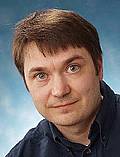
Markku Känsäkoski received his MSc degree in Electrical engineering from the University of Oulu, Finland in 1991. After graduation he joined VTT Electronics and is currently holding a position Customer Manager of both Printable Electronics and Optics and Micromodules. He is also a vice Technology Manager of Printable Electronics and Optics center at VTT and Senior research scientist in multidisciplinary Biomicrosystems team. During 2000 he was a visiting scientist at the Sira Ltd., UK. He is inventor in five original patents and author in more than 30 scientific peer-reviewed and scientific conference presentations in the fields of on-line process analyzer development and applications and polymer lab-on-a-chips. He is a member of the organising committee of Bio Meets Nano and IT international conference. His current research is focused on the development of biomicrosystems for applications in health care, environmental diagnostics and packaging and advancing latest printable electronics and optics technologies in these applications.
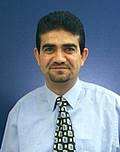
Mohammed Mabrook received his BSc degree in Electrical Engineering from the University of Basrah, Iraq, in 1987, and an MSc in Power Electronics Engineering from Bradford University, UK, in 1993. He obtained his PhD from Sheffield Hallam University, UK, for work on the fabrication and characterization of porous silicon in the year 2000. He is now senior research associate in the Durham Centre for Molecular and Nanoscale Electronics. His main research interests include organic memory devices, inkjet-printing of organic materials, thin films, porous silicon, and sensors. He is also involved in research in the area of sensors for food quality control and CNT based devices. His Molecular Electronics Group is also focused on the fabrication and characterisation of electronic and opto-electronic devices incorporating thin films of organic compounds.
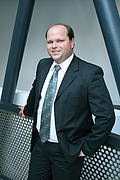
Franz Padinger (Austrian citizen) is Co-Founder & CTO of NANOIDENT Technologies AG. He is a worldwide recognized scientist in the field of printed semiconductor photophysics and chemistry and responsible for NANOIDENT's R&D activities. He studied Chemistry and Industrial Engineering at Johannes Kepler University Linz and realized within his diploma work the world's first large-area solar cells based on printed semiconductors. Based on the results of his diploma work, the company "Quantum Solar Energy Linz (QSEL)" was founded, where he headed R&D and project activities from 1998 until 2003. Under his guidance QSEL became the world leader for plastic solar cells. By the end of 2002 QSEL was successfully sold to Konarka Technologies Inc. (Boston, US) and renamed to Konarka Austria. He is the author of numerous scientific publications in the field of printed semiconductors and one of the most cited authors in photovoltaics, and is cited as an inventor on several patents. During his career at Konarka Austria, Franz also worked together with Alan Heeger, inventor of printed semiconductors and Nobel Laureate.

Ruth Shinar received her PhD in Physical Chemistry from the Hebrew University of Jerusalem, Israel. Following a post doctoral position at the University of California, Santa Barbara, she joined the Microelectronics Research Center of Iowa State University in 1985, where she is currently a Senior Scientist. Her recent research interests include chemical and biological sensors, in particular structurally integrated photoluminescence-based sensors excited by an array of organic light-emitting diode pixels.
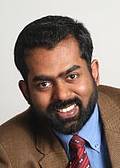
Vivek Subramanian received his PhD in electrical engineering from Stanford University in 1998. Dr. Subramanian co-founded Matrix Semiconductor, Inc., in 1998. Since 2000, he has been at the Department of Electrical engineering and Computer Sciences at the University of California, Berkeley, where he is currently an Associate Professor. He is also a founding technical advisor at Kovio, Inc., a startup company working on printed inorganic electronics. Dr. Subramanian is a member of the Institute of Electrical and Electronic Engineers (IEEE) and has served on the technical committee for the Device Research Conference and the International Electron Device Meeting. In 2002, he was nominated to Technology Review's list of top 100 young innovators (the TR100), and his work at Matrix Semiconductor was nominated to the Scientific American SA50 list for visionary technology.
